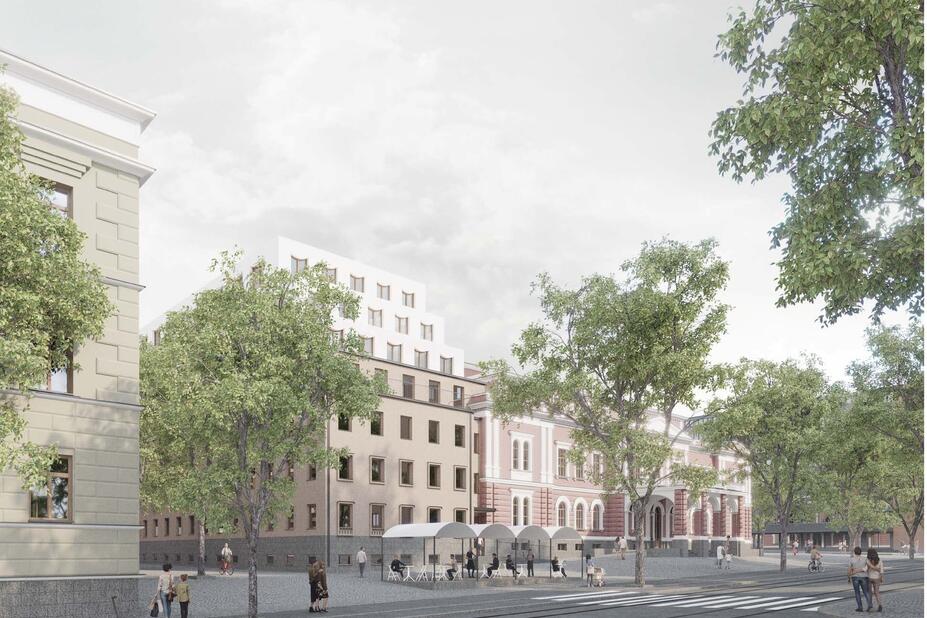
The protection entity on the lot will also be reviewed during the detailed plan revision. The old section of the theatre is already protected by a regulation under the Act on the Protection of Buildings, and an updated protection order in accordance with the Act on the Protection of the Built Heritage is being processed by the Uusimaa Centre for Economic Development, Transport and the Environment. The extension is not currently protected, but the protection of its Bulevardi-side facade is being investigated in the detailed plan.
The detailed plan revision was initiated based on an application by the landowner. Senate Properties sold the Alexander Theatre to a private property owner in 2022. The objective of the new owner is to develop the property for theatre and hotel use.
The Alexander Theatre was completed in 1879 and it served as the Russian theatre in Helsinki until 1917 when Finland became independent. In 1918–1993, the building hosted the Finnish National Opera and Ballet (previously the Domestic Opera). An extension was completed at the side of the original opera building in 1953. It contained office space, in addition to storage, rehearsal and dressing room facilities. Since 1993, the theatre has operated as a guest stage.
Currently, the old section of the building serves active theatre operations. The theatre hall and the connected foyer and lobby areas are well-preserved and have special cultural-historical value. The extension houses both areas for staff and office space that is currently rented out. The extension also has rehearsal halls and dressing rooms that are used by hobby groups in the evenings.
Three new levels to the extension
The detailed plan revision is based on the idea that more floor area could be allowed for the theatre extension for hotel use. Two alternative plans were made during the initial planning stages.
Both options were based on a solution where part of the facades of the 1950s extension are preserved as they are and the rest are rebuilt in keeping with the style of the original extension. The two options only differed from each other in terms of the architecture of the new build and architectural modellings. Both options preserved the trees along Albertinkatu and Bulevardi that are significant in terms of cityscape, reduced the number of parking spots and created more pronounced front areas for both the theatre and the hotel.
One of the two options was chosen for further processing after the initial stage based on feedback received. Features such as the size and shape of the windows and the facade materials have been changed in the plan.

Give your feedback 20 May–19 June 2025
The detailed plan proposal and the plan’s preparatory materials (reference plan, reports) are available for viewing 20 May 2025–19 June 2025 on the website hel.fi/suunnitelmat
Objections regarding the plan proposal and the preparatory materials are requested by 19 June 2025. Written objections must be submitted to the City of Helsinki Register Office (Pohjoisesplanadi 11–13) by email to helsinki.kirjaamo@hel.fi (The link will open your default email service)(Link opens default mail program) or by post to City of Helsinki, Register Office, Urban Environment Division, PO Box 10, 00099 City Of Helsinki.
After the possible objections have been received, the plan proposal can be reviewed based on the statements and objections received. The reviewed plan proposal will be presented to the Urban Environment Committee in autumn 2025 and the City Council in early 2026.
More information in Finnish
Alexander Theatre, detailed plan revision
A detailed plan revision was initiated for the Alexander Theatre lot located along Bulevardi. A hotel is planned for the extension of the theatre completed in 1953. This requires that the extension be elevated by adding three levels.